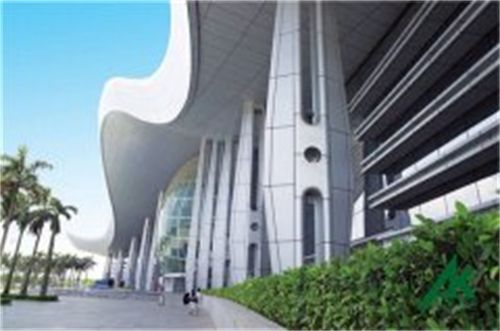

 Frequently asked questions
Frequently asked questions
Abstract: This article will explore the influence of the weight of aluminum veneer on building structures from four aspects. Firstly, weight will affect the load-bearing capacity of the building; Secondly, weight can affect the wind resistance performance of buildings; Thirdly, weight will affect the construction difficulty of the building; Finally, weight will affect the durability of the building. By elaborating on these four aspects in detail, we can better understand the importance of aluminum veneer in architecture.
1. The weight of aluminum veneer directly affects the load-bearing capacity of building structures. Lightweight aluminum veneer can reduce the overall load of the building, lower its own weight, and thus reduce the pressure on the building structure. On the contrary, if excessive aluminum veneer is used, it will increase the load on the building, leading to excessive structural stress and potential safety hazards.
2. Research has shown that reasonable control of the weight of aluminum veneer can improve the seismic performance of building structures. Lightweight aluminum veneer can reduce the weight of buildings, making them more evenly stressed during earthquakes and reducing structural deformation and damage. Therefore, when designing buildings, it is necessary to consider the impact of the weight of aluminum veneer on seismic performance.
3. In addition to earthquakes, wind power is also an important consideration for building structures. Lighter aluminum veneer can reduce the wind load on buildings, reduce the stress on structures, and improve the wind resistance performance of buildings. On the contrary, if excessive aluminum veneer is used, it may increase the wind load on the building, making the structure vulnerable to wind force and increasing the risk of collapse.
1. The weight of aluminum veneer can also have a certain impact on the construction of buildings. Lighter aluminum veneer is easier to handle and install, reducing the labor intensity of construction personnel and improving construction efficiency. Heavy aluminum veneer will increase the difficulty of construction, requiring more manpower and mechanical equipment to complete the installation.
2. In addition, lighter aluminum veneers can also reduce safety risks on construction sites. When working at heights, lighter aluminum veneers have lower requirements for supporting structures, reducing the possibility of accidents. However, excessive aluminum veneer may increase the risk of high-altitude operations and pose a threat to the safety of construction personnel.
3. In terms of maintenance and replacement, lighter aluminum veneers are also more convenient. Due to its lighter weight, maintenance personnel can easily handle and replace aluminum veneers, reducing the difficulty and time cost of maintenance work.
1. The weight of aluminum veneer has a certain impact on the durability of buildings. Lighter aluminum veneer is relatively more stable and less susceptible to external factors, and can maintain a longer service life. However, excessive aluminum veneer may cause structural deformation or damage, reducing the durability of the building.
2. In addition, lighter aluminum veneers can also reduce fatigue damage to building structures. Due to the lighter weight of aluminum veneer, the building experiences less stress during long-term use, reducing the fatigue level of the structure and extending its lifespan.
3. Finally, lighter aluminum veneers are also more environmentally friendly. Due to its lighter weight, it requires fewer materials, reducing resource consumption and environmental burden. In the pursuit of sustainable development today, lightweight building materials have better development prospects.
In summary, the weight of aluminum veneer has a significant impact on building structures. It will affect the load-bearing capacity, wind resistance, construction difficulty, and durability of the building. Therefore, when designing and selecting aluminum veneers, it is necessary to comprehensively consider these factors to ensure the safety, stability, and sustainable development of the building.